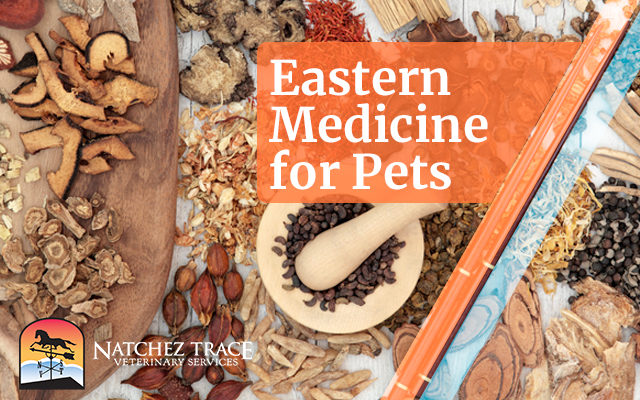
Although Western medicine remains the predominant approach in veterinary care, there is a noticeable surge in the popularity of Eastern therapies.
Eastern medicine, particularly Traditional Chinese Medicine (TCM), operates on the foundational principles of Taoism.
Similarly, in the realm of animal care, Traditional Chinese Veterinary Medicine (TCVM) serves as the animal-focused counterpart to TCM.
While Western medicine often delineates between health and disease, the core divergence lies in TCVM’s perspective, which perceives wellness as a delicate equilibrium.
Contrary to pinpointing symptoms of a specific ailment, Eastern medicine practitioners scrutinize the entirety of a patient’s life to discern the underlying imbalance causing the illness.
To illustrate further, Eastern medicine adjusts to an environment, whereas Western medicine endeavors to alter the environment.
Within TCVM, achieving balance within oneself, in relationships, in tandem with nature, and through dietary equilibrium is pivotal for comprehensive health and wellness.
This practice originated from extensive and meticulous observations of nature, the cosmos, and the human body.
Eastern Medicine: Veterinary Practices
The principles underpinning Traditional Chinese Medicine (TCM) and its counterpart in veterinary care, Traditional Chinese Veterinary Medicine (TCVM), have evolved over an extensive period exceeding 3,500 years, predominantly practiced across Eastern nations but increasingly gaining traction worldwide.
In recent years, TCVM has experienced a rapid surge in adoption within Western societies, serving as a complementary approach alongside conventional methods.
This modality has demonstrated significant efficacy, particularly in cases where animals display limited or adverse responses to standard Western veterinary treatments.
Eastern medicine comprises five fundamental branches, each playing a distinct role in fostering holistic animal wellness:
- Food Therapy: Food therapy employs specific dietary plans tailored to an animal’s unique constitution to restore balance and enhance overall health.
- Acupuncture: Through the strategic insertion of fine needles into specific points along the body’s meridian pathways, acupuncture aims to stimulate physiological responses, alleviate pain, and promote healing.
- Eastern Herbals: Utilizing a wide array of herbs, this branch aims to rebalance the body’s vital energies and address various health conditions in animals, often through the use of herbal formulations.
- Tui-Na: Tui-Na (pronounced “twee-na”) is a manual therapy utilizing massage, acupressure, and manipulation techniques applied to animals to stimulate specific points, improve circulation, and alleviate musculoskeletal issues.
- Qi-Gong: Qi-Gong (pronounced “chi-gong”) involves exercises, breathwork, and movements designed to cultivate and enhance the flow of vital energy (Qi) within the body, promoting overall well-being. Obviously, Qi-Gong is a practice intended for the practitioner and pet parent rather than the pet.
Integrating the five branches within TCVM represents a comprehensive and holistic approach to animal care, rooted in the belief that optimal health arises from the harmonious balance of physical, emotional, and energetic aspects.
As TCVM continues to gain recognition in the Western veterinary landscape, its multifaceted practices offer a promising avenue for addressing diverse health challenges in animals, emphasizing a more holistic and personalized approach to their care.
Eastern Medicine’s Benefits
Eastern medicine benefits all animals who are susceptible to illness.
Instead of waiting for an ailment to occur and then treating it, Eastern medicine practices emphasize prevention through a healthy and balanced life.
For example, in treating common viruses, allergies, and illnesses, a traditional veterinarian may prescribe antibiotics, which are often overused, or potent pharmaceuticals with harsh side effects.
The Eastern medicine practitioner, however, may suggest a combination of Chinese herbal therapy, various forms of massage, acupuncture, and specific dietary guidelines.
TCVM treatments address ear infections, allergies, skin problems, and chronic pain.
Traditional Chinese Veterinary Medicine (TCVM) offers several benefits that complement and sometimes enhance conventional Western veterinary practices. The benefits include:
- Holistic Approach: Eastern medicine treats the whole animal rather than just the symptoms or specific diseases. It emphasizes the interconnectedness of various body systems, emotional well-being, and environmental factors contributing to an animal’s health.
- Individualized Treatment: TCVM practitioners personalize treatments based on an animal’s unique constitution, temperament, and specific health condition. This tailored approach aims to address the root cause of the issue rather than just managing symptoms.
- Balancing Body’s Energy: Eastern medicine is centered around the concept of Qi (vital energy) flowing through the body’s meridians. Therapies such as acupuncture, herbal medicine, and Qi-Gong aim to restore the balance and flow of Qi, promoting healing and overall wellness.
- Natural Therapies: TCVM often utilizes natural therapies such as herbal medicine, food therapy, acupuncture, and manual techniques like Tui-Na, which may have fewer side effects than certain pharmaceutical medications used in Western medicine.
- Complementary Care: Eastern medicine can complement Western veterinary treatments, especially in cases where animals may not respond well to conventional medications or when additional support for pain management, mobility issues, or chronic conditions is needed.
- Preventive Medicine: TCVM emphasizes maintaining balance and preventing illness before it occurs. It can be employed as a preventive measure to support an animal’s overall health and well-being, potentially reducing the risk of specific health issues.
- Chronic Conditions and Pain Management: Eastern medicine modalities, particularly acupuncture and herbal medicine, have shown effectiveness in managing chronic conditions such as arthritis, neurological disorders, and various types of pain in animals.
- Expanded Treatment Options: By incorporating TCVM into veterinary care, practitioners have a more comprehensive range of therapeutic options to offer, allowing for a more comprehensive approach to treating complex health issues in animals.
With its holistic philosophy and diverse therapeutic modalities, Eastern medicine contributes to a more comprehensive and integrative approach to animal healthcare, providing alternative and sometimes complementary options for addressing various animal health concerns.
To stay current, Dr. Marc Smith attends Chi University in Reddick, Florida, for continuing education in Eastern Medicine/TCVM.



